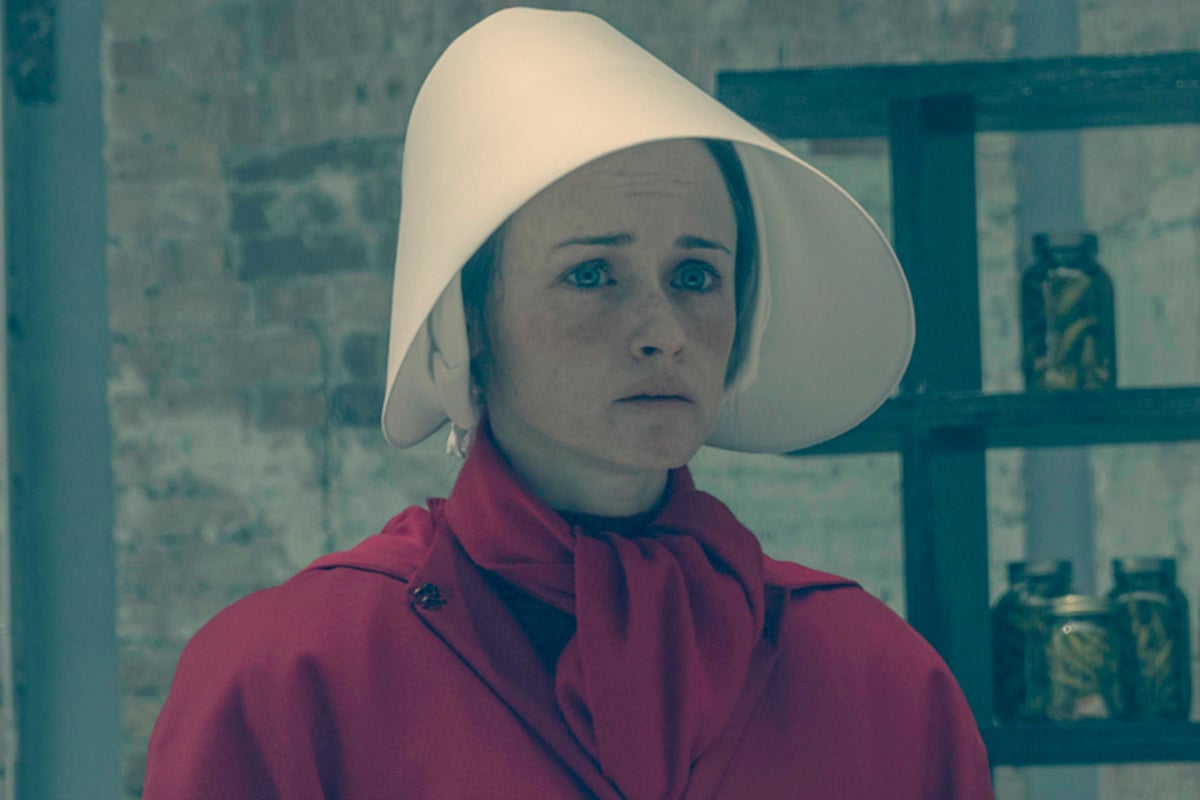
Warning: Spoilers for The Handmaid’s Tale Season 3 ahead.
Thirty six minutes into episode one of The Handmaid’s Tale season 3, I began to cry.
As Emily (played by Alexis Bledel) walked into a Canadian hospital cradling her friend’s baby, she was greeted with love. Doctors, nurses and patients began to cheer for their safe arrival.
The pair had been smuggled across the border, fleeing the authoritarian regime that ruled their home country, Gilead; a place where women were raped and stripped of their fundamental rights.
The baby’s mother, June (Elisabeth Moss), had remained behind in the hope of rescuing her other daughter from the same fate.
Myth-busting facts about refugees. Post continues after video.
When she arrived in Canada, Emily was not asked if she was a terrorist, if she had come for economic reasons, or if she could live in line with true Canadian values and was willing to assimilate. She was asked if she was okay, and told to watch her cholesterol.
She was, by all means, welcomed home by a country that was not her own.
And so I cried. But my tears were not of joy or celebration, they were of distress.
It struck me that if Emily, a white refugee woman, arrived in Australia with a white baby, we would likely have greeted her with applause too. Sadly, that welcome is far from the kind that’s extended to refugees of colour who seek shelter on our shores.




























































































